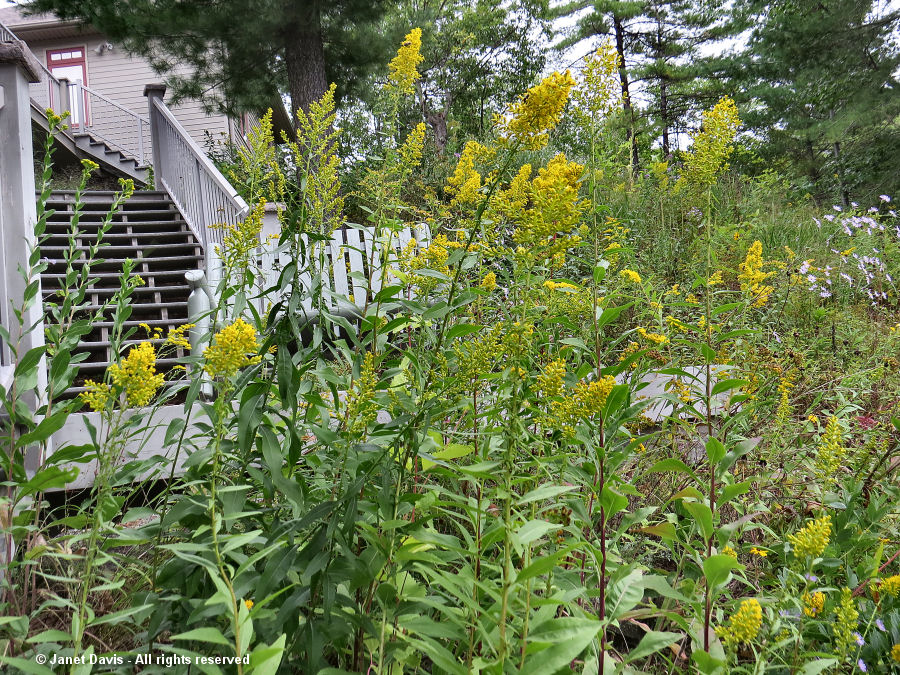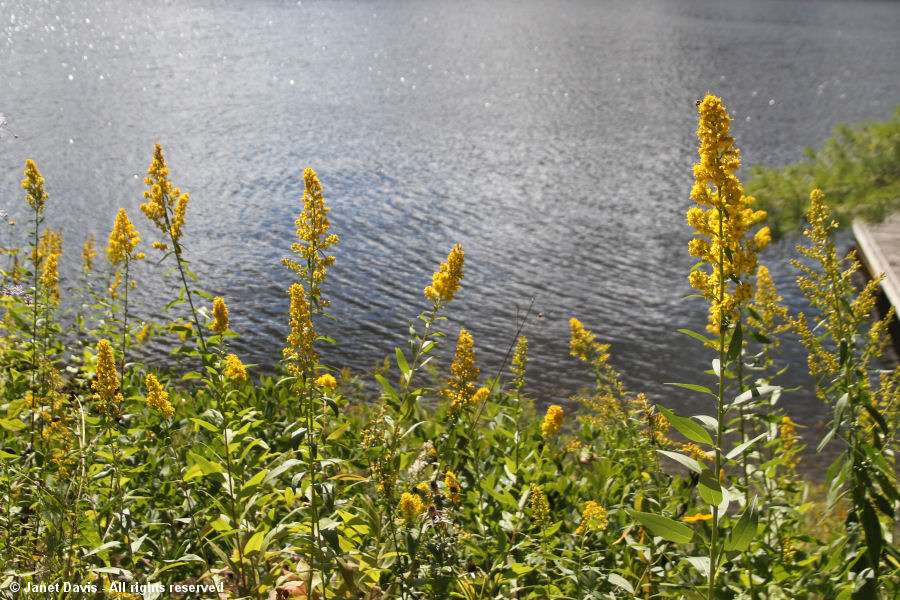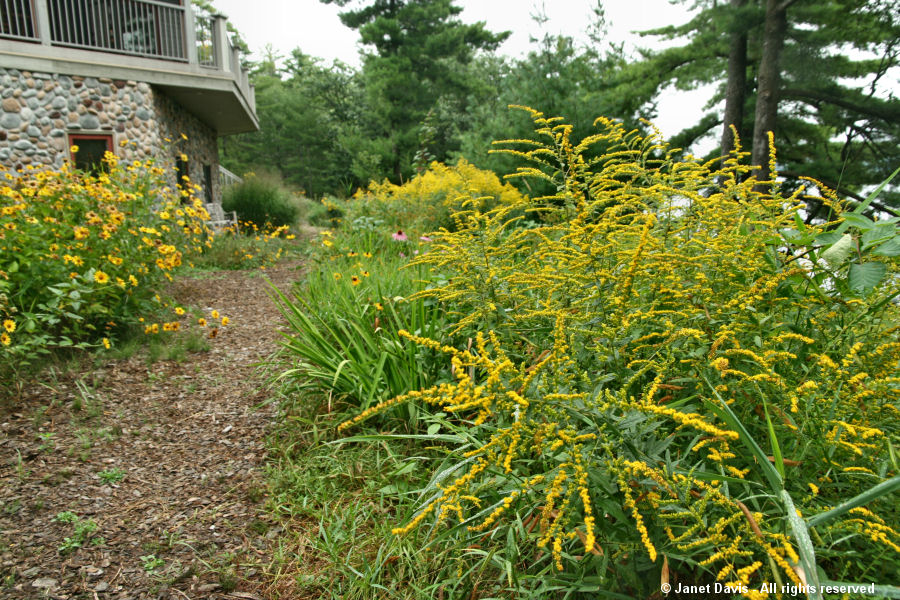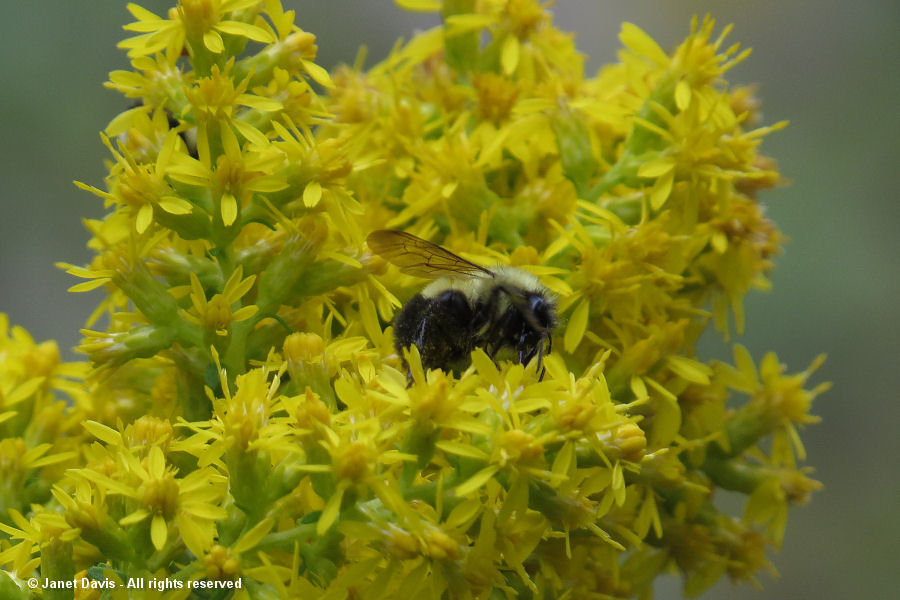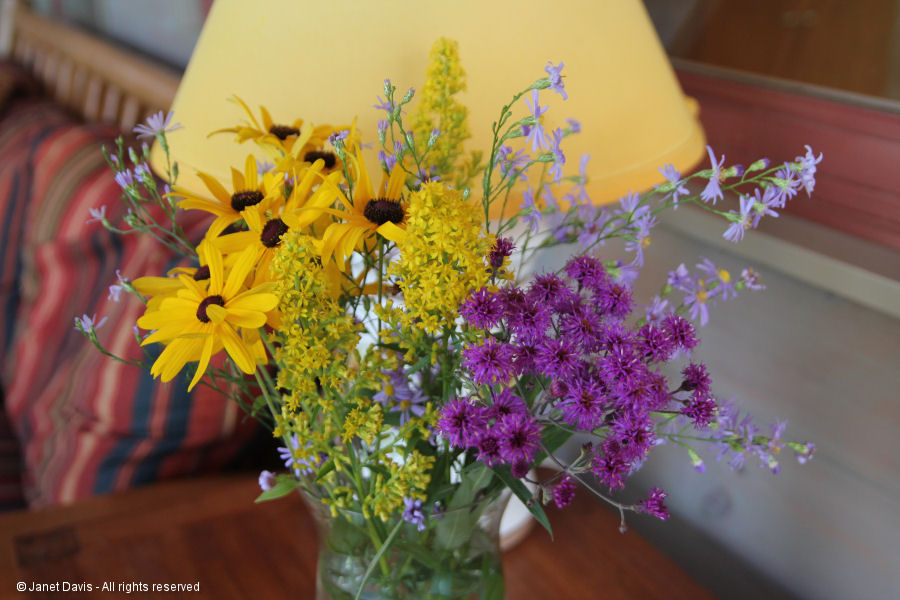If seeding goldenrod on a property already bursting with goldenrod species is bringing coals to Newcastle, colour me soot-black. Because that is what I did several years ago, on the basis of one September plant sighting in a border at the Montreal Botanical Garden. It was my first introduction to Solidago speciosa and I was charmed. The following November, I threw a few ounces of seed around our cottage property on Lake Muskoka, a few hours north of Toronto.
When scores of seedlings with bright-red stems and rather large, floppy leaves appeared the following spring, growing less than 30 cm (1 foot) high in their first season, I was a little puzzled as to their intentions. Little did I know that the showy goldenrod was growing tenacious tap roots well down into our sandy-gravelly, acidic soil until they hit the hard granite of the Precambrian Shield on which I garden here at the cottage. Then it was content and ready to grow tall the next season, though always with large, floppy basal leaves.
Speciosa means “showy” and showy goldenrod lives up to its billing. Depending on the richness of the soil and its moisture-retentiveness, it ranges in height from 120-150 cm (4 to 5 feet) and its dense inflorescence packed with tiny golden flowers is indeed very beautiful. As mentioned, the stem (not on all plants, but most) is rich red, adding to the visual appeal. But, like all its golden-flowered cousins, it is not a plant to encourage if you’re nervous about invasive tendencies for it is not only showy, but a little pushy, too. However, its single-stemmed growth habit means it isn’t quite as difficult to remove as a tangled thicket of Canada goldenrod (S. canadensis) or even the rough-leafed goldenrod (S. rugosa) shown below, whose roots found a devious hiding spot under huge boulders placed to hold the soil at the top of our hillside.
What is very distinctive about showy goldenrod is its ultra-late flowering season. Long after the bees have taken all the nectar from the Canada goldenrod, rough-leafed goldenrod, gray goldenrod (S. nemoralis) and stout goldenrod (S. squarrosa) and merging with the end of the season of stiff goldenrod (S. rigida), showy goldenrod comes along like an early autumn candy shop, ready to dispense its pollinator favours until after Canadian thanksgiving in October, barring a hard freeze.
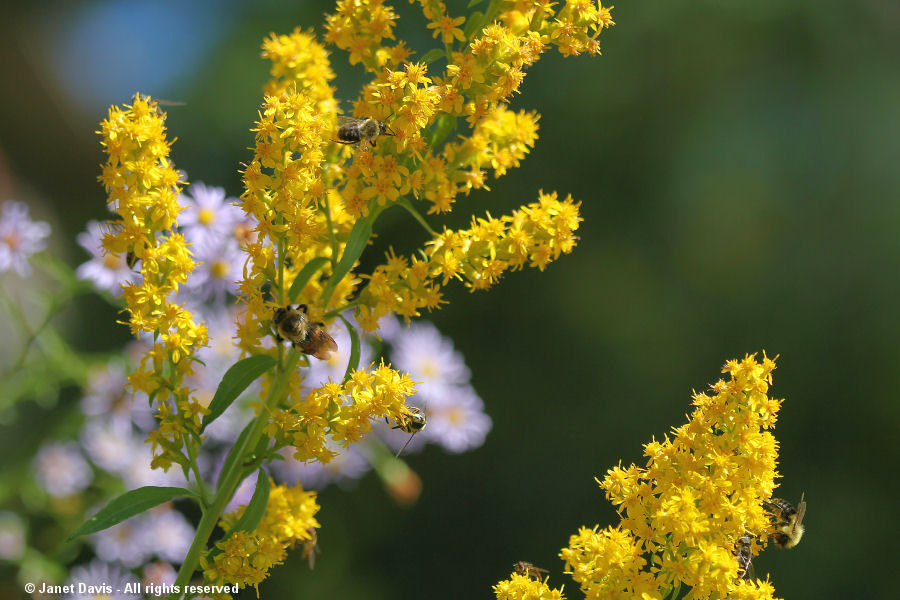
With the many fall asters coming into bloom, it is now the sweet game in town for the bees. Bumble bees, other native bees and hoverflies are crazy about it and on a sunny day in late September or early October, the golden plumes are literally crawling with them. As night temperatures drop, I often find bumble bees sleeping on them in the morning, waiting for enough solar heat to power their wings. It will be the very last flower they see in their short lives.
And like all the other goldenrods, of course, it is a great cut flower, and charming in a late September bouquet, especially with other late season perennials like magenta-pink New York ironweed (Vernonia novaboracensis), sweet blackeyed Susan (Rudbeckia tomentosa) and sky-blue aster (Symphyotrichum oolentangiensis).
And, no, goldenrods do not cause allergies – it’s the nefarious ragweed (Ambrosia artemesiifolia) blooming at the same time with its innocuous flowers that is the culprit.

